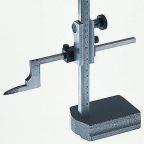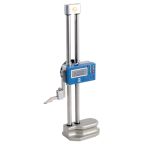Height Gauges
Height gauges are precision measuring tools that are used to determine the height of objects or for marking of items to be worked on. Height gauges are among the most versatile measuring instruments in manufacturing. They measure the distance from a reference point, usually, a surface plate, to the component or product height gages range from simple surface gages for measurement transfer and marking to motorised digital height gages which have a powerful data calculating tool with auto scanning functions. RS offer a range of high-quality height gauges from leading brands including Mitutoyo, Kleffmann & Weese and of course RS PRO.
What are the different types of height gauge?
Electronic Height Gauges sometimes called digital height gauges. These types of gauges use digital displays instead of analog dials to display measurements. Some electronic height gauges also incorporate handwheels for the height adjustment.
Vernier Height Gauges use the main scale and a Vernier scale to provide a greater resolution and fine adjustment of the measured value. These gauges can have imperial (inch) or metric (mm) scales or both.
- Height Gages Features include
- Very precise and reliable.
- Ergonomically designed with a comfortable base and large, smooth slider feed wheel.
- Available as portable rods can be folded down for easy storage.
- Made using a sturdy aluminium.
- LCD display.
- Digital mechanical models are lightweight and durable.
- Mid to high-end height gauges are incorporating motor drives into their sensing heads,








